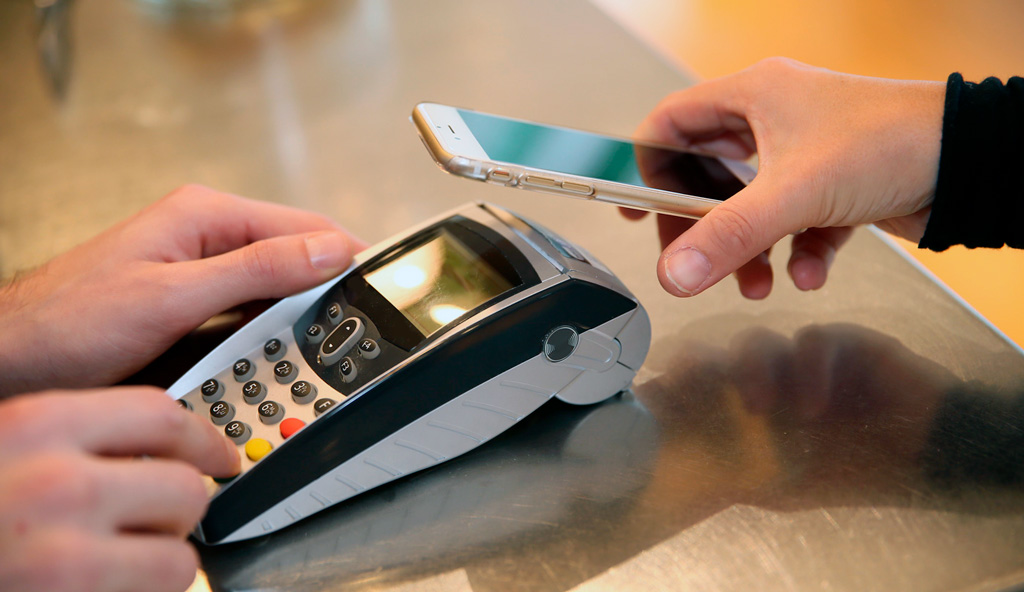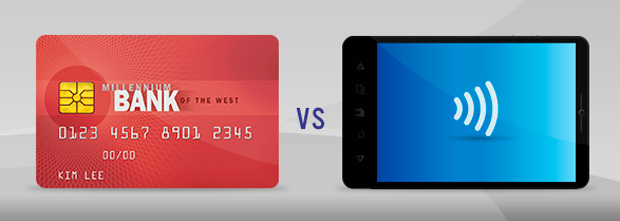American users are very often dissatisfied with the speed of payment with chip cards.

Which is more convenient and secure, EMV or NFC?
Since October 2015, all bank cards issued in the United States are equipped with microchips. Their number at the beginning of the third quarter of this year amounted to more than 320 million pieces, and 1.3 million stores have learned to handle them. However, consumers are not happy with the speed of payment with chip cards and the long queues that are created in connection with this.
EMV (derived from the capital letters of the three payment systems Europay, MasterCard and VISA) is an international standard for bank card transactions with a chip, developed by international payment systems to improve the security of financial transactions. When we speak of EMV, we mean cards with chips. It is known that chip cards are more difficult and more expensive to counterfeit, therefore EMV technology is considered one of the most reliable. In addition, when paying in stores, payment with such cards requires entering a PIN.
In Europe, chip cards are a fairly common payment instrument. But in the US, consumer habits are different. Since the transition to EMV cards has begun quite recently, Americans are not yet used to them. First of all, users complain about the extended queues in stores. According to a study by Ingenico Group, 21% of Americans believe that payment with a chip card "takes too long."

According to Square, an American mPOS terminal developer, the solution to the problem is NFC technology. This is a wireless communication technology, when you can make a payment just by holding the smartphone to which the bank card is attached to the payment terminal. The main advantage of the technology is the speed of payment. Square also claims that NFC is the most secure payment technology.
But on the way to the spread of this technology is the problem of users' distrust of the security of NFC payments. The study showed that 77% of 1000 respondents did not use NFC payments at all, and almost half of them - for security reasons. Among adults over 35, only 26% have tried this technology at least once. Adaptation to NFC is much more pronounced in the 90s generation: 45% of buyers under 34 say they have used this feature in their smartphones.
Company PayOnline presented the translation infographic Square, which compares two innovative technologies.
PAYSPACE MAGAZINE HELP
In order to solve the problem of slow transactions involving EMV cards, Square decided to significantly reduce the transaction time - from 5.7 seconds to 4.2 seconds. This will be possible thanks to the launch of a new version of the hardware.
SEE ALSO: What is NFC?

Which is more convenient and secure, EMV or NFC?
Since October 2015, all bank cards issued in the United States are equipped with microchips. Their number at the beginning of the third quarter of this year amounted to more than 320 million pieces, and 1.3 million stores have learned to handle them. However, consumers are not happy with the speed of payment with chip cards and the long queues that are created in connection with this.
EMV (derived from the capital letters of the three payment systems Europay, MasterCard and VISA) is an international standard for bank card transactions with a chip, developed by international payment systems to improve the security of financial transactions. When we speak of EMV, we mean cards with chips. It is known that chip cards are more difficult and more expensive to counterfeit, therefore EMV technology is considered one of the most reliable. In addition, when paying in stores, payment with such cards requires entering a PIN.
In Europe, chip cards are a fairly common payment instrument. But in the US, consumer habits are different. Since the transition to EMV cards has begun quite recently, Americans are not yet used to them. First of all, users complain about the extended queues in stores. According to a study by Ingenico Group, 21% of Americans believe that payment with a chip card "takes too long."

According to Square, an American mPOS terminal developer, the solution to the problem is NFC technology. This is a wireless communication technology, when you can make a payment just by holding the smartphone to which the bank card is attached to the payment terminal. The main advantage of the technology is the speed of payment. Square also claims that NFC is the most secure payment technology.
But on the way to the spread of this technology is the problem of users' distrust of the security of NFC payments. The study showed that 77% of 1000 respondents did not use NFC payments at all, and almost half of them - for security reasons. Among adults over 35, only 26% have tried this technology at least once. Adaptation to NFC is much more pronounced in the 90s generation: 45% of buyers under 34 say they have used this feature in their smartphones.
Company PayOnline presented the translation infographic Square, which compares two innovative technologies.
PAYSPACE MAGAZINE HELP
In order to solve the problem of slow transactions involving EMV cards, Square decided to significantly reduce the transaction time - from 5.7 seconds to 4.2 seconds. This will be possible thanks to the launch of a new version of the hardware.
SEE ALSO: What is NFC?
